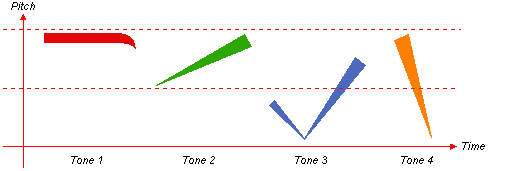太 阳 和 太 阳 风 层 探 测 器 tài yáng hé tài yáng fēng céng tàn cè qì Solar 太 阳 灶 tài yáng zào solar 太 阳 能 tài yáng néng solar energy 小 雪 Xiǎo xuě Xiaoxue or Lesser Snow, 20th of the 24 solar terms 二十四節氣|二十四节气 / 22nd November-6th December 大 雪 Dà xuě Daxue or Great Snow, 21st of the 24 solar terms 二十四節氣|二十四节气 / 7th-21st December 心 口 xīn kǒu pit of the stomach / solar plexus / words and thoughts 太 阳 系 tài yáng xì solar system 公 历 gōng lì Gregorian calendar / solar calendar 太 阳 能 热 水 器 tài yáng néng rè shuǐ qì solar water heater 冬 至 Dōng zhì Winter Solstice, 22nd of the 24 solar terms 二十四節氣|二十四节气 / 22nd December-5th January 节 气 jié qi solar term 发 电 量 fā diàn liàng (power station, solar panel etc) output / capacity 子 son / child / seed / egg / small thing / 1st earthly branch: 11 p.m.-1 a.m., midnight, 11th solar month (7th December to 5th January), year of the rat / viscount, fourth of five orders of nobility 五等爵位[wu3deng3 jue2wei4] / ancient Chinese compass point: 0° / (north) / subsidiary / subordinate / (prefix) sub- 阳 历 yáng lì solar calendar / Western (Gregorian) calendar 夏 至 Xià zhì Xiazhi or Summer Solstice, 10th of the 24 solar terms 二十四節氣|二十四节气 / 21st June-6th July 太 阳 能 电 池 tài yáng néng diàn chí solar cell 白 露 bái lù Bailu or White Dew, 15th of the 24 solar terms 二十四節氣|二十四节气 / 8th-22nd September 立 春 Lì chūn Lichun or Beginning of Spring, 1st of the 24 solar terms 二十四節氣|二十四节气[er4 shi2 si4 jie2 qi5] 4th-18th February 小 寒 Xiǎo hán Lesser Cold, 23rd of the 24 solar terms 二十四節氣|二十四节气 / 6th-19th January 春 分 Chūn fēn Chunfen or Spring Equinox, 4th of the 24 solar terms 二十四節氣|二十四节气 / 21st March-4th April 谷 雨 Gǔ yǔ Guyu or Grain Rain, 6th of the 24 solar terms 二十四節氣|二十四节气 / 20th April-4th May 立 秋 Lì qiū Liqiu or Start of Autumn, 13th of the 24 solar terms 二十四節氣|二十四节气 / 7th-22nd August 立 夏 Lì xià Lixia or Start of Summer, 7th of the 24 solar terms 二十四節氣|二十四节气 / 5th-20th May 日 食 rì shí solar eclipse 大 寒 Dà hán Great Cold, 24th of the 24 solar terms 二十四節氣|二十四节气 / 20th January-3rd February 惊 蛰 Jīng zhé Jingzhe or Insects Wake, 3rd of the 24 solar terms 二十四節氣|二十四节气 / 6th-20th March 立 冬 Lì dōng Lidong or Start of Winter, 19th of the 24 solar terms 二十四節氣|二十四节气 / 7th-21st November 寒 露 Hán lù Hanlu or Cold Dew, 17th of the 24 solar terms 二十四節氣|二十四节气 / 8th-22nd October 大 月 dà yuè solar month of 31 days / a lunar month of 30 days 秋 分 Qiū fēn Qiufen or Autumn Equinox, 16th of the 24 solar terms 二十四節氣|二十四节气 / 23rd September-7th October 霜 降 Shuāng jiàng Shuangjiang or Frost Descends, 18th of the 24 solar terms 二十四節氣|二十四节气 / 23rd October-6th November 太 阳 风 tài yáng fēng solar wind 太 阳 电 池 tài yáng diàn chí solar cell 芒 种 Máng zhòng Mangzhong or Grain in Beard, 9th of the 24 solar terms 二十四節氣|二十四节气 / 6th-20th June 虚 岁 xū suì one's age, according to the traditional Chinese method of reckoning (i.e. the number of Chinese calendar years in which one has lived) &ndash / In this system, a person's age at birth is one, and increases by one at the beginning of the first solar term 立春[Li4 chun1] each year, rather than on one's birthday. / contrasted with 實歲|实岁[shi2 sui4] 未 not yet / did not / have not / not / 8th earthly branch: 1-3 p.m., 6th solar month (7th July-6th August), year of the Sheep / ancient Chinese compass point: 210° 新 历 xīn lì Gregorian calendar / solar calendar 大 暑 Dà shǔ Dashu or Great Heat, 12th of the 24 solar terms 二十四節氣|二十四节气 / 23rd July-6th August 节 joint / node / (bound form) section / segment / solar term (one of the 24 divisions of the year in the traditional Chinese calendar) / seasonal festival / (bound form) to economize / to save / (bound form) moral integrity / chastity / classifier for segments: lessons, train wagons, biblical verses etc / knot (nautical miles per hour) 小 暑 Xiǎo shǔ Xiaoshu or Lesser Heat, 11th of the 24 solar terms 二十四節氣|二十四节气 / 7th-22nd July 耀 斑 yào bān solar flare 太 阳 帆 tài yáng fān solar sail 处 暑 Chǔ shǔ Chushu or End of Heat, 14th of the 24 solar terms 二十四節氣|二十四节气 / 23rd August-7th September 午 7th earthly branch: 11 a.m.-1 p.m., noon, 5th solar month (6th June-6th July), year of the Horse / ancient Chinese compass point: 180° / (south) 申 to extend / to state / to explain / 9th earthly branch: 3-5 p.m., 7th solar month (7th August-7th September), year of the Monkey / ancient Chinese compass point: 240° 辰 5th earthly branch: 7-9 a.m., 3rd solar month (5th April-4th May), year of the Dragon / ancient Chinese compass point: 120° 亥 12th earthly branch: 9-11 p.m., 10th solar month (7th November-6th December), year of the Boar / ancient Chinese compass point: 330° 巳 6th earthly branch: 9-11 a.m., 4th solar month (5th May-5th June), year of the Snake / ancient Chinese compass point: 150° 寅 3rd earthly branch: 3-5 a.m., 1st solar month (4th February-5th March), year of the Tiger / ancient Chinese compass point: 60° 酉 10th earthly branch: 5-7 p.m., 8th solar month (8th September-7th October), year of the Rooster / ancient Chinese compass point: 270° / (west) 戌 11th earthly branch: 7-9 p.m., 9th solar month (8th October-6th November), year of the Dog / ancient Chinese compass point: 300° 闰 intercalary / an extra day or month inserted into the lunar or solar calendar (such as February 29) 太 阳 活 动 tài yáng huó dòng sunspot activity / solar variation 太 阳 日 tài yáng rì solar day 小 满 Xiǎo mǎn Xiaoman or Lesser Full Grain, 8th of the 24 solar terms 二十四節氣|二十四节气 / 21st May-5th June 二 十 四 节 气 èr shí sì jié qi the 24 solar terms, calculated from the position of the sun on the ecliptic, that divide the year into 24 equal periods 光 伏 器 件 guāng fú qì jiàn photovoltaic device (e.g. solar cell) 启 蛰 Qǐ zhé Waking from Hibernation / old variant of 驚蟄|惊蛰[Jing1 zhe2], Insects Wake, 3rd of the 24 solar terms 二十四節氣|二十四节气[er4 shi2 si4 jie2 qi5] 6th-20th March 回 归 年 huí guī nián the solar year / the year defined as the period between successive equinoxes 太 阳 能 板 tài yáng néng bǎn solar panel 太 阳 神 经 丛 tài yáng shén jīng cóng solar plexus chakra 太 阳 翼 tài yáng yì solar panel 太 阳 轮 tài yáng lún solar plexus chakra 太 阳 电 池 板 tài yáng diàn chí bǎn solar panel 库 珀 带 kù pò dài the Kuiper belt (in the outer reaches of the Solar system) 猎 户 臂 liè hù bì Orion spiral arm or local spur of our galaxy (containing our solar system) 聚 光 太 阳 能 jù guāng tài yáng néng concentrating solar power (CSP) 脐 轮 qí lún manipūra or manipura, the solar plexus chakra 查克拉, residing in the upper abdomen 风 圈 fēng quān ring around the moon / lunar halo / solar halo 太 阳 辐 射 tài yáng fú shè solar radiation 太 阳 常 数 tài yáng cháng shù solar constant 太 阳 能 电 池 板 tài yáng néng diàn chí bǎn solar panel 干 旱 地 区 太 阳 能 和 风 能 国 际 专 题 讨 论 会 International Symposium on Solar and Wind Energy of the Arid Zone 太 阳 能 模 块 solar module 岛 屿 太 阳 能 首 脑 会 议 - 岛 屿 可 再 生 能 源 Island Solar Summit - Renewable Energies for Islands 国 际 太 阳 能 炊 具 组 织 guó jì tài yáng néng chuī jù zǔ zhī Solar Cookers International 世 界 太 阳 能 倡 议 shì jiè tài yáng néng chàng yì World Solar Initiative 空 间 太 阳 能 电 站 solar space power plant 太 阳 能 供 热 和 冷 却 讲 习 班 Workshop on Solar Heating and Cooling 太 阳 能 电 推 进 系 统 tài yáng néng diàn tuī jìn xì tǒng Solar Electric Propulsion System 国 际 太 阳 两 极 考 察 飞 行 计 划 International Solar Polar Mission 太 阳 后 向 散 射 紫 外 探 测 仪 Solar Backscattered Ultraviolet Spectral Radiometer 主 动 式 太 阳 能 系 统 zhǔ dòng shì tài yáng néng xì tǒng active solar energy system 太 阳 能 水 泵 tài yáng néng shuǐ bèng solar pump 太 阳 理 论 tài yáng lǐ lùn solar theory / sunspot theory 太 阳 能 制 冷 系 统 tài yáng néng zhì lěng xì tǒng solar cooling system 太 阳 能 蒸 馏 tài yáng néng zhēng liù solar distillation 太 阳 风 光 谱 仪 tài yáng fēng guāng pǔ yí solar wind spectrometer 太 阳 扁 率 solar oblateness 平 均 太 阳 日 píng jūn tài yáng rì mean solar day 太 阳 峰 年 分 析 Solar Maximum Analysis 世 界 太 阳 能 首 脑 会 议 World Solar Summit 野 边 山 太 阳 电 波 观 测 所 Nobeyama Solar Radio Observatory 被 动 式 太 阳 能 采 暖 系 统 passive solar heating system 非 洲 太 阳 能 论 坛 fēi zhōu tài yáng néng lùn tán African Solar Forum 家 用 太 阳 能 系 统 jiā yòng tài yáng néng xì tǒng Solar Home System 太 阳 能 制 冷 tài yáng néng zhì lěng solar refrigeration 太 阳 能 干 燥 器 solar drier / solar dehydrator 日 震 学 rì zhèn xué solar seismology 太 阳 能 集 热 器 tài yáng néng jí rè qì solar collector
















 zǐ
zǐ




























 wèi
wèi




 jié
jié






 wǔ
wǔ

 shēn
shēn

 chén
chén

 hài
hài
 sì
sì
 yín
yín

 yǒu
yǒu
 xū
xū
 rùn
rùn





















































